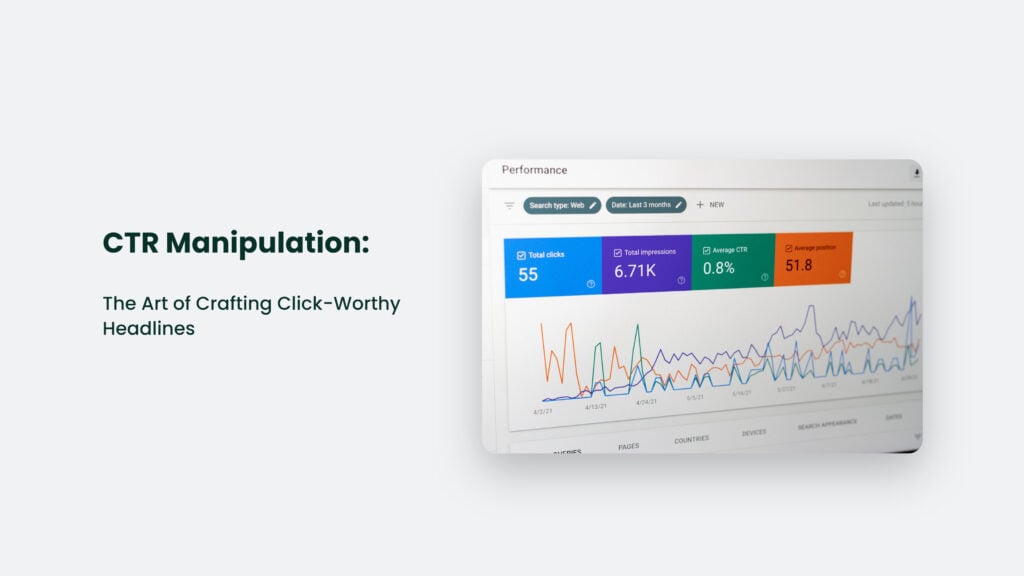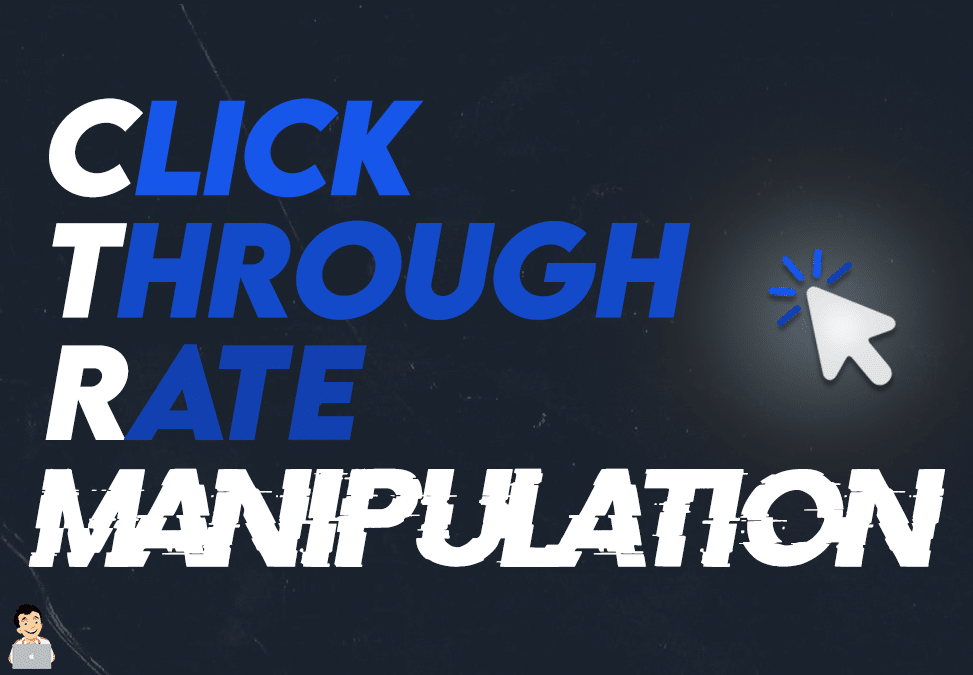CTR Manipulation: A Proven Strategy for Better Clicks
The idea of click-through rate (CTR) manipulation has garnered interest as a calculated method to enhancing electronic marketing outcomes. As we explore the intricacies of reliable CTR techniques, one must consider: exactly how can marketing professionals balance the quest of greater clicks with the crucial of maintaining count on and credibility in their brand?
Recognizing CTR Control
Although click-through price (CTR) control can be a contentious topic, understanding its mechanisms is important for digital online marketers and system managers alike. CTR is the proportion of individuals who click a certain web link to the overall number of individuals that see a page, advertisement, or e-mail . An elevated CTR suggests effective web content, while a reduced CTR might recommend that enhancements are essential.
Manipulation of CTR can happen via various methods, such as changing ad placements, enhancing headings, or changing call-to-action language. These techniques can alter the viewed performance of projects, causing prospective misconceptions of user interaction and habits.
In addition, CTR adjustment can affect algorithm-driven systems, as these systems usually prioritize material based upon involvement metrics. As a result, inflated CTRs can misdirect marketing professionals right into thinking that their strategies are generating positive outcomes, potentially losing sources on ineffective campaigns.

Techniques for Effective Control

One more technique entails making use of attractive visuals. Integrating top quality pictures or videos can attract customers in, making them more probable to involve with the material. Furthermore, using A/B testing enables marketing professionals to try out different variants of ad calls-to-action, images, and duplicate to identify which reverberates best with the target market.

Ethical Factors To Consider in CTR Strategies
As marketers explore various strategies to boost click-through prices (CTR), it is imperative to take into consideration the ethical implications of these strategies. Ethical advertising techniques focus on transparency, honesty, and regard for the audience, making certain that users are not misled by misleading techniques that might produce short-term gains however ultimately damages brand reputation.
One significant moral problem arises from the usage of clickbait headings, which assure mind-blowing content however provide marginal worth. Such methods can wear down depend on in between consumers and brands, resulting in stress and disillusionment. Furthermore, using deceptive images or adjusting data to produce an incorrect story can misstate the actual advantages of a service or product, raising questions about honesty.
Marketing experts should additionally be cautious concerning customization methods that may infringe upon personal privacy civil liberties. Tailoring content based on customer data can enhance interaction, yet it needs to be finished with customer approval and recognition. Striking a balance between effective CTR techniques and honest considerations is go crucial for cultivating lasting connections with customers. Inevitably, adopting ethical methods not just safeguards a brand's reputation however also adds to a healthier electronic ecological community where customers feel valued and informed.
Determining the Effect of Adjustments
Determining the influence of changes in click-through rates (CTR) is important for assessing the effectiveness of marketing methods - CTR Manipulation. This involves accumulating information on CTR, conversion rates, and other relevant performance indicators.
Once modifications are made, online marketers ought to employ A/B testing to contrast the performance of various strategies. This method enables a controlled environment where one variable is changed while others stay consistent, enabling a clearer understanding of the his comment is here modifications' effect on CTR. Additionally, segmenting data by audience demographics or networks can supply understandings right into which sectors react favorably to certain adjustments.
Normal evaluation of these metrics post-implementation is required to track progression and identify patterns. Making use of tools such as Google Analytics and heat maps can enhance this evaluation, providing a thorough view of user habits. By continually measuring the influence of modifications, services can make informed choices, maximizing their advertising and marketing efforts for enhanced interaction and eventually driving much better performance across campaigns.
Long-Term Benefits of CTR Control
The long-term advantages of click-through price (CTR) manipulation extend past instant engagement metrics, fostering sustained development and improved brand name visibility. By tactically improving CTR, firms can grow a faithful target market base, as greater involvement frequently equates to increased depend on and credibility. This count on can assist in consumer retention, eventually bring about greater conversion prices over time.
Furthermore, boosted CTR signals to browse engines and social platforms that web content is relevant and important, which can improve natural reach. As formulas prioritize high-performing material, brands that click to read consistently accomplish elevated CTRs are more probable to take advantage of increased exposure in search results page and suggested feeds.
In the context of digital marketing, a higher CTR can also cause reduced client purchase expenses. As campaigns become much more efficient, organizations can assign sources more efficiently, optimizing roi.
Conclusion
To conclude, CTR adjustment represents an important method for boosting click-through prices with numerous methods such as enhanced headings and personalized material. While the capacity for increased involvement is substantial, moral considerations need to guide these methods to make certain count on and reliability are maintained. By systematically gauging the impact of changes and concentrating on lasting benefits, companies can properly leverage CTR adjustment to foster sustained client loyalty and assist in brand development in a significantly affordable electronic landscape.
The principle of click-through rate (CTR) adjustment has gathered attention as a strategic strategy to enhancing electronic advertising end results.Although click-through price (CTR) adjustment can be a contentious topic, recognizing its mechanisms is essential for electronic online marketers and platform managers alike. A raised CTR indicates effective web content, while a low CTR may recommend that enhancements are needed.
Employing tactical methods for effective CTR adjustment can considerably improve user engagement and project efficiency.In final thought, CTR control stands for a useful approach for boosting click-through prices via numerous methods such as optimized headlines and personalized material.